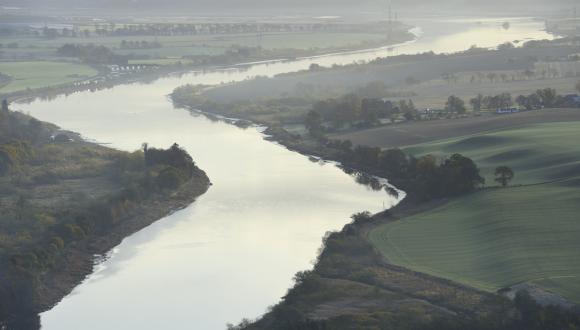European eel
This eel makes an astonishing journey to spawn, migrating from Europe to the Sargasso Sea, near Bermuda – and back again.
The European eel is widely distributed within European freshwaters and can be found in a wide variety of freshwater and estuarine habitats.
Its journey to the Sargasso Sea, is one of the most impressive feats of animal migration observed in nature. But very little research has been carried out to work out whether this the only site used by European eels to reproduce.
No silver eels – the migratory adult form – have ever been caught in the open ocean.
It’s also unclear:
- whether spawning takes place at one time of year only or over an extended period
- how long it takes the eels take to reach their spawning grounds
- how many of the eels that leave Europe make it to the Sargasso Sea to spawn
Life-cycle
The European eel has four life stages:
- Glass eel
- Elver
- Yellow eel
- Silver eel
After spawning in the Sargasso Sea, the eel’s eggs are assumed to drift eastwards towards Europe with the Gulf Stream. During this time, the eggs hatch into leaf-shaped young larvae, called leptocephalus.
It’s only on reaching the European continental shelf that they metamorphose into the cylindrical shape we associate with eels. These virtually transparent fish are known as glass eels.
On entering freshwater, glass eels darken in colour as pigmentation takes place. Now known as elvers, they migrate upstream to a wide variety of freshwater and estuarine habitats. Eels may even move over wetland to reach some bodies of water.
Known as yellow eels while freshwater-resident, they can remain in these habitats for more than 20 years, feeding on invertebrates and fish. Once ready to reproduce, they turn into silver eels and migrate to the Sargasso Sea.
Threats to European eels
People have exploited the European eel at all of its life stages for centuries, and the fish has supported a number of large-scale commercial fisheries across Europe.
The European eel hasn’t been heavily fished within Scotland, though limited exploitation has taken place in some localities. Yet eel numbers in Scotland are thought to have fallen drastically – by more than 90% – since the 1990s.
The International Union for Conservation of Nature (IUCN) now regards the species as critically endangered. View the European eel entry on the IUCN Red List of Threatened Species.
Conservation of European eels
The widespread decline in European eels has led the European Commission has developed an eel recovery plan (Council Regulation No. 1100/2007).
This aims to return European eel stocks (adults and glass eels) to sustainable levels. Each Member State must establish its own national eel management plan. Scotland developed such a plan in 2008.
View details of our eel management plan on the Scottish Government website.
The European eel is a UK Biodiversity Action Plan priority fish species
Find out more
Read our guidance for planners and developers on protected animals.




